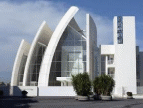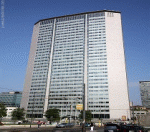Introduction
Modern architects viewed the architecture of the 19th century as being severely bound to past styles which were one of the main reasons, they decided to invent architecture for the 20th century that expressed the spirit of a new age and one that would surpass the style and technology of the earlier architecture. Modern architecture confronts traditional ideas about the types of structures or buildings that were suitable for architectural design (Italy travel, 2010).
Structures such as aristocratic palaces, public institutions such as sports facilities, and churches were known to be the mainstay of architectural practices, but modern designers argue that architects should design buildings that were relevant to the current society’s needs. In the first half of the 20th century, many modernists produced housing that included furnishings such as wallpaper and textiles which were meant to create a designed domestic environment (Italy travel, 2010).
Rome
According to Meier (2003), the beginning of modern architecture in Italy is epitomized by the late 19th Century shopping galleries furnished with iron and glass roofs in Milan, Naples, Genoa, and Turin. This fashion of architecture however never made it to Rome which instead had a massive white marble monument that was built between 1885 and 1911. Mussolini and the Fascist era made their architectural mark with grandiose building schemes such as the Foro Italico Sports Centre (1928-1931) that is located at the foot of Monte Mario and the Esposizione Universale di Roma which is a district in the outskirts of Rome; a district that has axial monumentality, massive statues, and underutilized museums.
Other than apartment buildings in the outer suburbs, Rome has seen a small amount of new architecture in the second half of the 20th century with exceptions being the Stadio Flaminio which was built for the 1960 Olympics, the mosque in the Parioli area, and the new auditorium north of the city center. Other structures built in the 20th century are the Dio Padre Misericordioso (God the Merciful Father) church which was designed by American Architects Richard Meier & Partners. The church is located in the Tor Tre Teste suburb in Rome


Milan
Milan faced a tumultuous period in the 20th century in the architecture sector which brought with it several innovations and designs. The post World War II period of reconstruction saw a rapid economic growth that was accompanied by an increase in the population which saw the formation of new districts unlike Rome (A view on cities 2010).
This provided the motivation for architectural renewal in Milan that produced some milestones in the city’s architectural history some of which was the construction of the Pirelli Tower (1956- 1960) and the Velasca Tower (1956-1958). Other milestones were the creation of new residential districts and the construction of a new exhibition centre in Rho. There was also the urban renewal of the industrial areas in Milan which were transformed into modern residential districts (Garwoodet al. 2004).
References
A view on cities (2010) Pirelli Tower. Web.
Garwood, D., Kimball, K. and Watkins, R. (2004) Rome: city guide. Italy: Lonely planet. P.26.
Italy Travel (2010) Italy architecture: the twentieth century. Web.
Meier, R. (2003) Church Dio Padre Misericordioso, Rome. Galinsky. Web.